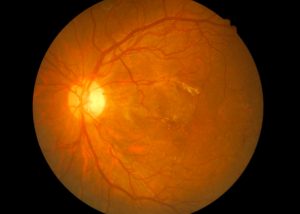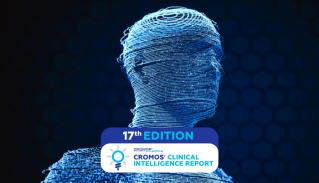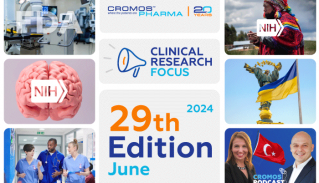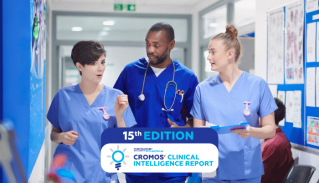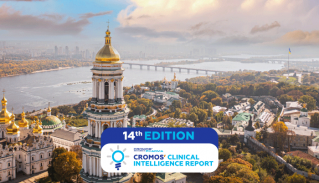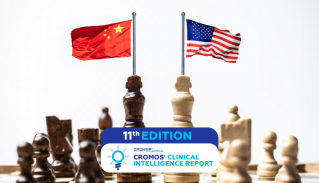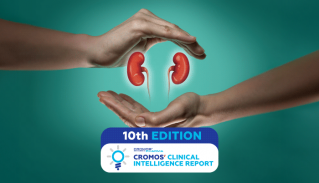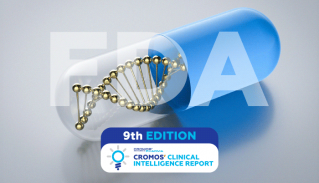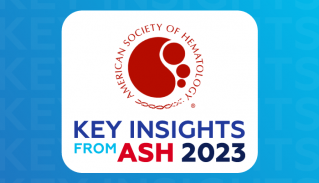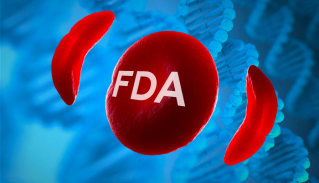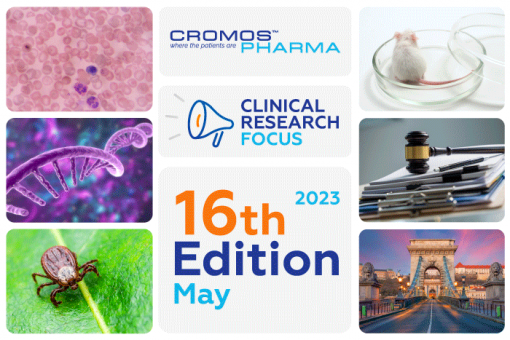
Clinical Research Focus. 16th Edition
Clinical Trials in Hungary
Hungary is known for its well-developed regulatory environment and advanced healthcare system. This has made the country a popular destination for pharmaceutical companies and contract research organizations (CROs) to conduct their clinical trials.
Aligned with the European Union regulations, the approval process for clinical trials is streamlined and efficient, significantly reducing the timelines for starting new trials. Consequently, there are currently 1,044 clinical trials being conducted in the country. All clinical trials in Hungary are regulated by the National Institute of Pharmacy and Nutrition (OGYÉI). If Hungary is selected/designated as the Reporting Member State (RMS), OGYÉI is responsible for approving the clinical trial applications via Clinical Trials Information System (CTIS) and ensuring that all trials are conducted in accordance with GCP guidelines.
Please follow the link to learn more.
Combination Therapy Facilitates Optimal Stem Cell Collection
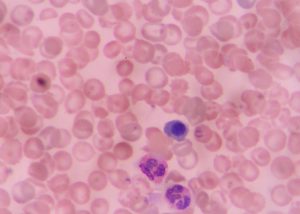 Combining motixafortide with standard stem cell therapy significantly increased the number of stem cells that can be harvested from patients with multiple myeloma, according to the results of an international Phase III trial. In over 92% of patients who underwent two collection procedures, the dual therapy facilitated the optimal number of stem cells to be harvested. In contrast, just 26% of patients who received standard therapy with granulocyte colony stimulating factor (G-CSF) plus a placebo had the optimal numbers of stem cells.
Combining motixafortide with standard stem cell therapy significantly increased the number of stem cells that can be harvested from patients with multiple myeloma, according to the results of an international Phase III trial. In over 92% of patients who underwent two collection procedures, the dual therapy facilitated the optimal number of stem cells to be harvested. In contrast, just 26% of patients who received standard therapy with granulocyte colony stimulating factor (G-CSF) plus a placebo had the optimal numbers of stem cells.
Stem cell transplantation is key to treating multiple myeloma, but, in some patients, standard therapies can’t harvest enough stem cells for the transplant to be effective. The results of the trial suggest that if approved, this combination therapy could significantly improve the stem cell transplantation process for multiple myeloma patients.
Please follow the link to learn more.
FDA Guidance on Drug Development for Neovascular Age-Related Macular Degeneration
The US Food and Drug Administration (FDA) has issued draft guidance for industry on the development of drugs to treat neovascular age-related macular degeneration.
The agency’s recommendations for clinical trials of drugs and biologics, including eligibility requirements, trial design, and efficacy endpoints, are provided in the draft guidance, which was released on February 24, 2023. The document was developed jointly by the FDA’s Center for Drug Evaluation and Research and the Center for Biologics Evaluation and Research.
Please follow the link to learn more.
Moderna Announces Development of New Treatments for Lyme Disease
 Moderna has announced two mRNA vaccine candidates, mRNA-1982 and mRNA-1975, for the prevention of Lyme disease caused by Borrelia burgdorferi and four major Borrelia species, respectively. Lyme disease is a bacterial infection that spreads to humans through infected ticks and can lead to various symptoms, including fever and a rash.
Moderna has announced two mRNA vaccine candidates, mRNA-1982 and mRNA-1975, for the prevention of Lyme disease caused by Borrelia burgdorferi and four major Borrelia species, respectively. Lyme disease is a bacterial infection that spreads to humans through infected ticks and can lead to various symptoms, including fever and a rash.
Moderna’s mRNA technology has been previously used for its COVID-19 vaccine, Spikevax. With around 120,000 cases of Lyme disease per year in Europe and the US, the development of a vaccine for the disease is in high demand. While there are eight other vaccines in active development for Lyme disease, VLA-15 appears to be the most promising with its multivalent design targeting six different serotypes of Borrelia.
Please follow the link to learn more.
Researchers Develop a New Powerful Resource to Study Extracellular RNA
 An international team of researchers has developed a powerful resource for studying extracellular RNA (exRNA), a novel form of cell-to-cell communication, which could provide a means to accurately detect diseases early and monitor disease processes. The researchers identified exRNA binding proteins (exRBPs) in plasma, serum, saliva, urine, and cerebrospinal fluid using computational analyses, which were validated experimentally in both plasma and cell cultures in the lab, with a high specificity for the computational method. The findings open a new road towards understanding exRNA biology and provide opportunities for the development of liquid biopsy biomarkers.
An international team of researchers has developed a powerful resource for studying extracellular RNA (exRNA), a novel form of cell-to-cell communication, which could provide a means to accurately detect diseases early and monitor disease processes. The researchers identified exRNA binding proteins (exRBPs) in plasma, serum, saliva, urine, and cerebrospinal fluid using computational analyses, which were validated experimentally in both plasma and cell cultures in the lab, with a high specificity for the computational method. The findings open a new road towards understanding exRNA biology and provide opportunities for the development of liquid biopsy biomarkers.
Please follow the link to learn more.
Self-Charging Battery Battles Tumors in Mice
 Scientists at Fudan University in Shanghai have developed a self-charging battery implant that deprives tumors of oxygen, making them more vulnerable to destruction by existing drugs. The implant consists of a small, flat disk coated with zinc on one side and polyimide on the other, which can charge itself in a saline environment, performing a powerful redox reaction that devours oxygen. The researchers implanted mice with invasive, tumor-forming cells that model human breast cancer and found that the battery alone shrank tumors by 26%, while tumors largely disappeared in mice who received both battery implantation and the cancer drug tirapazamine.
Scientists at Fudan University in Shanghai have developed a self-charging battery implant that deprives tumors of oxygen, making them more vulnerable to destruction by existing drugs. The implant consists of a small, flat disk coated with zinc on one side and polyimide on the other, which can charge itself in a saline environment, performing a powerful redox reaction that devours oxygen. The researchers implanted mice with invasive, tumor-forming cells that model human breast cancer and found that the battery alone shrank tumors by 26%, while tumors largely disappeared in mice who received both battery implantation and the cancer drug tirapazamine.
Please follow the link to learn more.
New EU Pharmaceutical Legislation
 On April 24, 2023, in its first major revision of the EU pharmaceutical legislation in over 20 years the Commission is proposing the most ambitious changes that will have a lasting impact on the drug industry. The reform includes two legislative proposals: a new Directive and a new Regulation which establish the EU regulatory framework for all medicines, replacing the previous pharmaceuticals legislation.
On April 24, 2023, in its first major revision of the EU pharmaceutical legislation in over 20 years the Commission is proposing the most ambitious changes that will have a lasting impact on the drug industry. The reform includes two legislative proposals: a new Directive and a new Regulation which establish the EU regulatory framework for all medicines, replacing the previous pharmaceuticals legislation.
Please follow the link to learn more.

